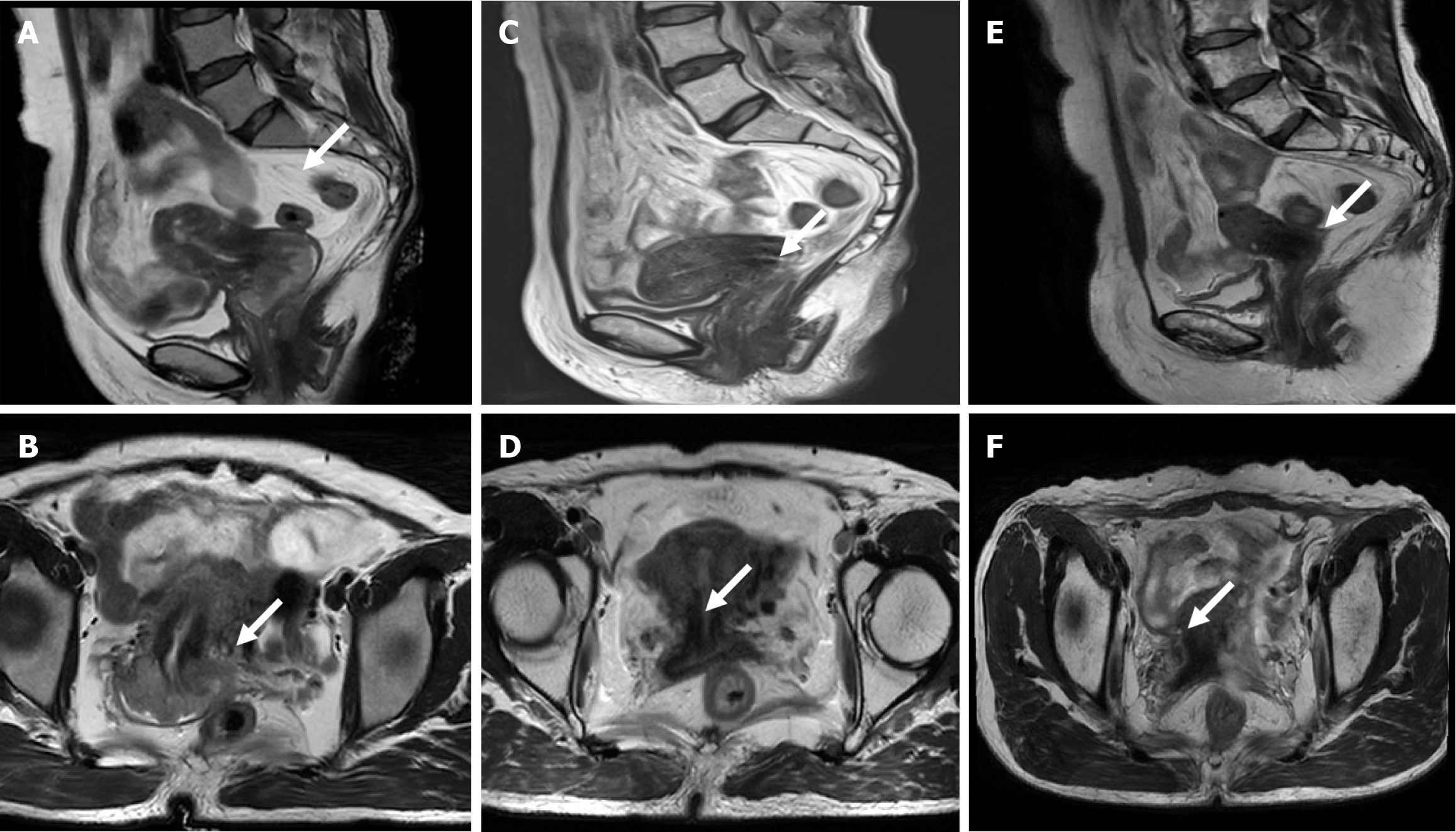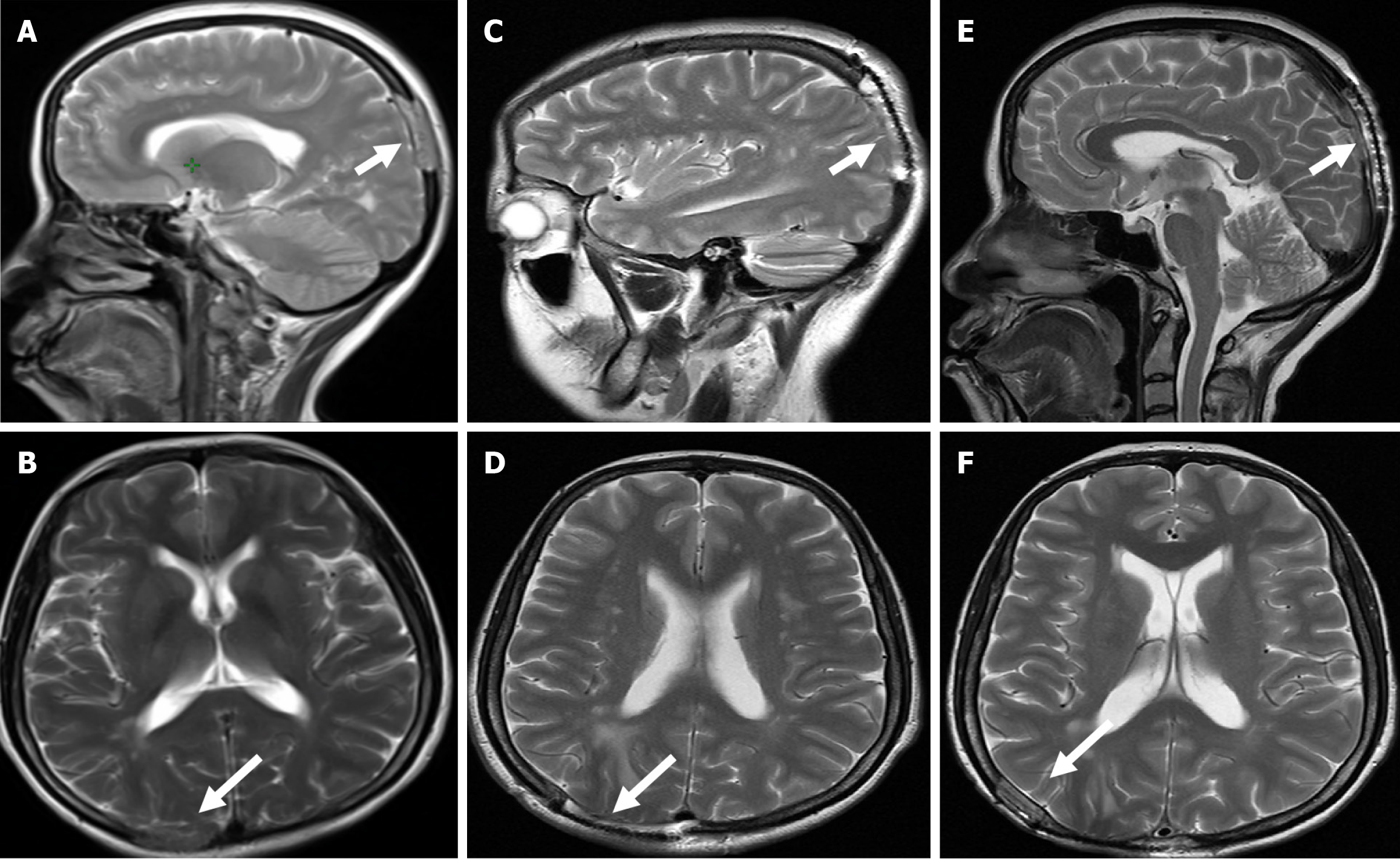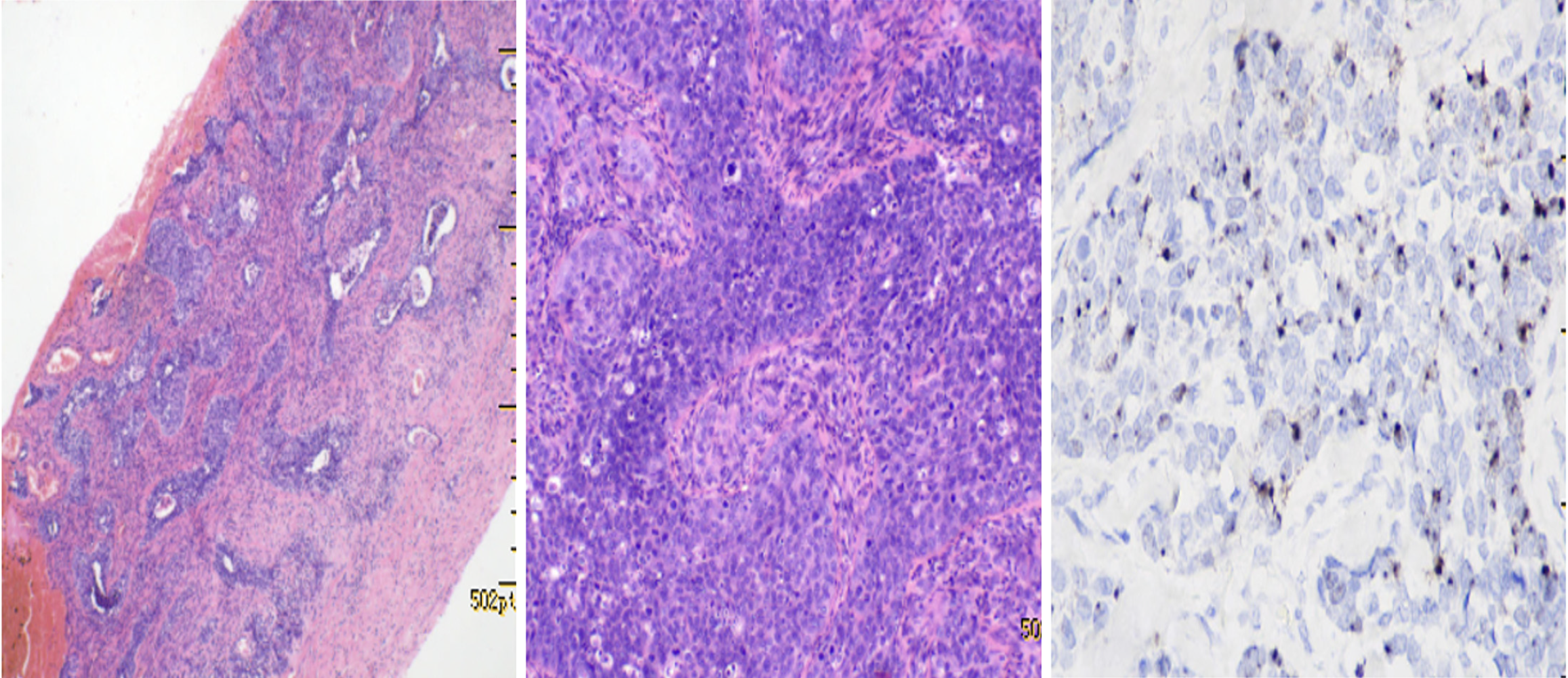Copyright
©The Author(s) 2025.
World J Clin Cases. Jul 6, 2025; 13(19): 103946
Published online Jul 6, 2025. doi: 10.12998/wjcc.v13.i19.103946
Published online Jul 6, 2025. doi: 10.12998/wjcc.v13.i19.103946
Figure 1 Pelvic magnetic resonance imaging with intravenous contrast.
A and B: A cervical mass with segmental absence of cervical stroma and an unclear local boundary with the anterior wall of the rectum (white arrows); C and D: An almost normal cervix after concurrent chemotherapy and radiotherapy treatment; E and F: Magnetic resonance imaging revealed good local control of the tumor, and the size of the uterus slightly decreased 1 year after the treatment (white arrows).
Figure 2 Images of brain magnetic resonance imaging.
A and B: Patchy high signal shadow was observed between the right parietal bone and adjacent soft tissues, with limited diffusion (white arrows); C and D: Brain magnetic resonance imaging before radiotherapy showed postoperative changes, and a cranial bone flap can be seen; E and F: Brain magnetic resonance imaging images obtained 6 months after the treatment (white arrows).
Figure 3 Pathological pictures of the patient.
Histology of serous carcinoma of the meningeal metastases shows endometrioid gland lined by columnar cells with eosinophilic cytoplasm and pseudostratified nuclei (hematoxylin and eosin × 400, left). Multi-subtype in situ hybridization showing spotty and patchy positive signals in the cytoplasm of tumor cells (right).
- Citation: Huang HQ, Gong FM, Sun CT, Xuan Y, Li L. Brain and scalp metastasis of cervical cancer in a patient with human immunodeficiency virus infection: A case report. World J Clin Cases 2025; 13(19): 103946
- URL: https://www.wjgnet.com/2307-8960/full/v13/i19/103946.htm
- DOI: https://dx.doi.org/10.12998/wjcc.v13.i19.103946















